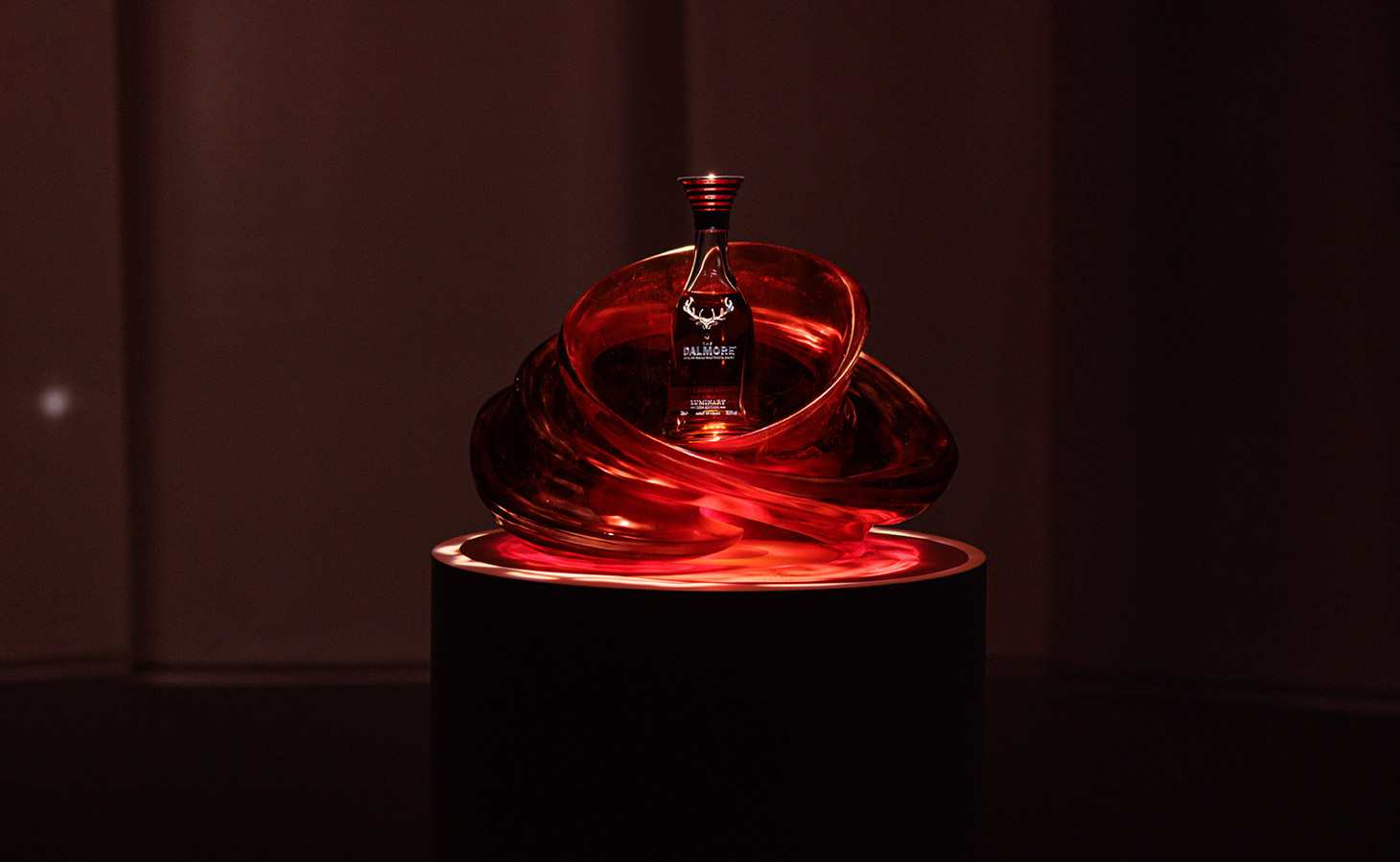Whisky and architecture are not an obvious pairing. Sure, you may better enjoy a dram in conducive surroundings, but the structure in which you stand while tasting a scotch is likely not top of mind. A collaboration in Scotland between designers and whisky makers, however, is exploring the creative connections between design and distillation—culminating in a one-of-a-kind artwork up for auction this week.
Director at Zaha Hadid Architects, Melodie Leung admits she wasn’t much of a whisky drinker when she began working with The Dalmore on a collaboration between the Highland distillery and the Scottish design museum V&A Dundee. Leung’s is the second contribution in a three-part project, called the Luminary Series, which requires both artists and distillers to put aside their usual approach, take risks, and create something magical—the pursuit of alchemy.
The result, The Dalmore Luminary No.2, is available in two ways. First, as an exceptionally rare 49-year-old single malt, of which only three bottles exist, presented with Leung’s specially created artwork. Only one set (bottle and sculpture) is being offered to collectors: it will be auctioned by Sotheby’s this week and is expected to sell for six figures, the proceeds of which will be donated to the V&A Dundee.

A second whisky created in this collaboration, The Collectible—a 16-year-old impression—will be released in a limited 20,000 bottles worldwide, a few of which (number undisclosed at present) will be available June 15 from the BCLDB.
In March, at Scotland’s historic Gleneagles Hotel, Leung discussed her collaboration with master whisky distillers Gregg Glass and Richard Paterson—a journey that required all parties to think outside their usual frames of reference. To prepare for the design, Leung toured the distillery, trying a selection of Dalmores from the archives while attempting to articulate what she felt and tasted.

Melodie Leung of Zaha Hadid Architects, with whisky makers Gregg Glass and Richard Paterson.
According to Glass, the key moment came when Leung entered the distillery’s dunnage warehouse, where the scotch is aged in barrels. “Melodie said the smell took her back to her childhood in Hong Kong, where chestnuts would be roasted by street vendors,” he explained. Leung’s scent memory triggered a flavour profile for the distiller, who began building a malt that evoked that sweet, nutty chestnut taste, enhanced with the bitter notes that roasting brings.
Once Glass and Paterson had their road map to create the whisky in place, Leung was back at her desk in London looking for the key that would unlock her own inspiration, with many glasses of whisky held, smelled, and tasted in the process. In the end—and perhaps unsurprisingly for a designer—Leung’s inspiration came from a visual moment: the light and life of whisky when held up and swirled in the glass.
Leung began work on her design: a sculpture made from a single piece of glass upon which The Dalmore Luminary No.2 would sit. But in contrast to the whisky-making, which would take constant tinkering and tweaking until the distillers were sure they had found the best expression, Leung’s glass sculpture was a one-shot deal. (Or two, to be exact: two sculptures were fired in different kilns, one to be auctioned, the other to be held at The Dalmore distillery. An acrylic designer’s proof will be on permanent display at the V&A Dundee.)

Firing a glass sculpture is painstaking, and the jeopardy only increases for a single piece that, as in Leung’s design, incorporates areas of widely different thickness. The glass stayed in the kiln for six months, the temperature dropping one degree each day, until it could finally be opened. There was no way of knowing, she says, if they would find a flawless sculpture or a mound of broken glass. Luck, it turned out, was on their side.
The sculpture was revealed later that night at the V&A Dundee, acting as a sultry plinth for the rare bottle of whisky, its richly hued accents glinting in the spotlights. Walking around the sculpture, seeing the different ways the light refracted, Leung’s concept became manifest.
Exactly as she intended, the piece evokes that wonderful moment a measure of exquisite whisky is poured into the glass, held up to the light, and swirled in anticipation.
Read more whisky stories.









